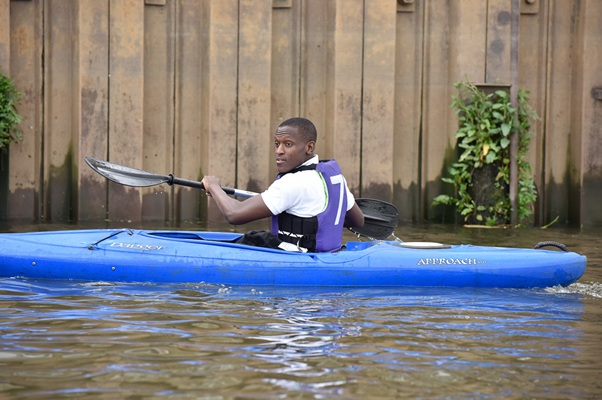Canoeing, with its blend of serenity and adventure, is a beloved outdoor activity enjoyed by people around the world. Whether gliding through calm lakes or navigating downriver currents, the key to a fulfilling canoeing experience lies in prioritizing safety. In this article, we’ll explore the essential practices that every paddler should adhere to for a secure and enjoyable journey on the water.
Key Practices for a Secure Paddling Experience
You can check the list of most death causes here and follow top secure practices. Seriously consider the below mentioned before canoeing. In an otherwise case, there are chances of more accidents.
Personal Safety Equipment
The cornerstone of canoeing safety is the proper use of Personal Flotation Devices (PFDs) or life jackets. Irrespective of swimming prowess, all paddlers should wear a well-fitted PFD. These devices not only provide buoyancy but are crucial in emergencies, ensuring the safety of both novice and experienced canoeists.
Basic Canoeing Skills
Before embarking on a canoeing adventure, it is essential to possess basic paddling and steering skills. For beginners, investing time in a canoeing course can be invaluable. These courses offer hands-on training and guidance, providing the confidence needed to navigate various water conditions. Practice in calm waters before progressing to more challenging environments enhances skills and builds a foundation for a safe journey.
Weather Awareness
Checking weather conditions before setting out on a canoe trip is a non-negotiable safety measure. Strong winds, thunderstorms, and other adverse weather conditions can pose significant risks. Stay informed about the forecast and plan outings on days with favorable weather to ensure a secure and enjoyable experience.
Communication and Planning
Effective communication and meticulous planning are essential components of a safe canoeing expedition. Before hitting the water, inform a trusted friend or family member about your plans, including your intended route and expected return time. This proactive step ensures that help can be dispatched promptly in case of unforeseen circumstances.
Waterway Selection
Choosing the right waterway is crucial for a safe canoeing experience. Beginners should start with calm and sheltered waters, gradually progressing to more challenging environments as their skills develop. Experienced paddlers can explore a variety of waterways, always matching their expertise to the demands of the chosen route.

Canoe Balance and Weight Distribution
Maintaining proper balance in the canoe is fundamental to stability. Distribute weight evenly, following the manufacturer’s recommendations for maximum weight capacity. This practice not only prevents capsizing but also contributes to a smoother and more enjoyable paddling experience.
Understanding Water Conditions
A keen understanding of water conditions is vital for safe canoeing. Be aware of currents, tides, and waves, and adjust your route and paddling techniques accordingly. This knowledge enhances control and ensures a safer journey through diverse water environments.
Avoiding Overloading
Exceeding the weight capacity of the canoe compromises stability and increases the risk of capsizing. Resist the temptation to overload the canoe with gear or passengers, and prioritize safety over convenience. Adhering to weight limits is a fundamental practice for a secure paddling experience.
Hydration and Proper Attire
Staying hydrated during a canoe trip is essential for maintaining energy and focus. Bring an adequate supply of water, especially on longer journeys. Additionally, wearing appropriate clothing for the weather conditions, including layering for temperature changes, contributes to both comfort and safety.
Sun Protection
When paddling under the sun, protect yourself from harmful UV rays. Apply sunscreen, wear sunglasses with UV protection, and don a hat to shield yourself from excessive sun exposure. These simple measures safeguard against sunburn and long-term skin damage.
Wildlife Awareness
Respecting the natural habitat of wildlife is a responsibility every paddler bears. Be cautious around animals, maintain a respectful distance, and avoid disturbing their habitats. A harmonious coexistence with wildlife ensures a more enriching and sustainable canoeing experience.
Essential Safety Gear
Carrying essential safety gear is non-negotiable for every canoeist. A well-equipped paddler should have a first aid kit, a whistle, a map, a compass, and a bilge pump. These tools are invaluable in addressing emergencies and unexpected challenges on the water.
Paddlers and Teamwork
Recognizing the collective responsibility of paddlers contributes to overall safety. Effective communication, collaboration, and teamwork among paddlers enhance the group’s ability to navigate challenges and ensure a secure journey for everyone.
Conclusion
Canoeing, with its blend of tranquility and excitement, offers a unique connection with nature. Prioritizing safety through the use of personal safety equipment, acquiring basic skills, weather awareness, effective communication, and other essential practices ensures that paddlers can fully enjoy the beauty of the waterways with confidence. By adhering to these safe practices, canoeing becomes not only a recreational activity but also a rewarding and secure outdoor adventure for enthusiasts of all levels.



